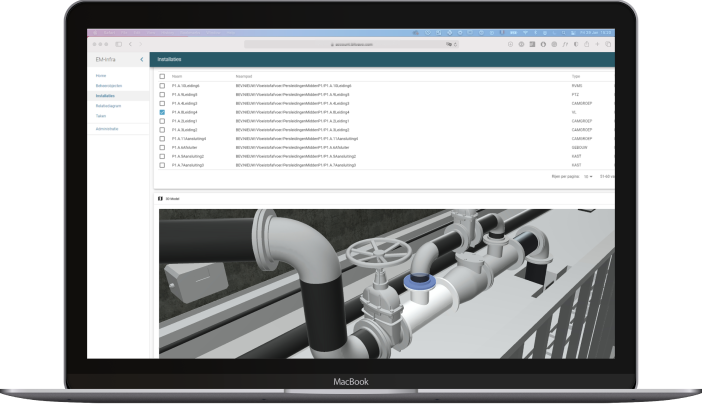The ultimate guide to Object Type Libraries (OTL) and Building Information Modeling (BIM)<strong>.</strong>
Joris Hoogeboom started his career at Páu after obtaining his MSc in Architecture and Engineering at TU Delft. With his passion for innovation, he was given a flexible role at Páu to test out innovative technology such as Blockchain, 3D, BIM, IoT, AI and data management as a whole.
I often get asked what I actually do. Am I a developer, designer, or analyst? It’s quite difficult to explain in a few sentences, but I hope that after reading this blog post, you will have a good idea of what I do and how it ties in with 3D, data management, and BIM.
What is BIM?
Analyzing, developing, conducting and managing construction works is a complex matter that combines several disciplines and stakeholders. Effective coordination is not always easy. This is where Building Information Modeling (BIM) comes in. In simple terms, it is a 3D model with added data/information, which forms the basis for cooperation within a team throughout the construction cycle. Apart from the model, there are also a set of agreements between the parties involved on how to go about the cooperation, and where responsibilities lie. This translates into efficiency gains and better risk management.
BIM at AWV
BIM has already been used for a long time in building and construction works but is less well-known in the infrastructure world. The Belgian Agency for Roads and Traffic (AWV), which manages infrastructure in Flanders, wants to take a leading role in this area. There is still a major added value to be found in this sector, for all the parties involved.
Our BIM philosophy is to have one single data source (a master data model) for the infrastructure of our Flemish roads. This means that we don’t only have a blueprint for our roads, construction works and road activities for current projects and maintenance, but that digital cooperation is possible too between all participants in a construction project so that it can be worked on more efficiently.
Object Type Library
To build this data source for the entire AWV portfolio and not just for each project, it is important that we speak the same data language. To facilitate this, AWV has developed an Object Type Library This is a semantic model published as an open standard that maps and defines assets/infrastructure objects. This gives clarity to partners on how data should be delivered and enables AWV to guarantee compliance.
Implementation
The OTL and BIM agreements enable processes to be automated. This means for example that, when BIM models are delivered, we can extract the data and check whether it complies with the OTL. For this, one of the things we use is the Autodesk Forge cloud platform for automatic extraction. This platform also allows the 3D models to be viewed in your browser. We integrate this Force viewer in our applications, to display the 3D geometry and provide context. This makes managing infrastructure assets a lot more visual. To seek and explore even more opportunities in the technical domain, we participated in an Autodesk Forge accelerator in London. A Forge Accelerator is a week-long opportunity for developers to work intensively on a chosen project with help, support and training directly from Autodesk’s international Forge team.
Want to know more about Autodesk Forge and Javascript development?
This is, of course, a complex subject for which there isn’t necessarily already a blueprint. My role is to analyze and research this in combination with hands-on prototypes, and development on the topics of data extraction and viewing. By combining this analysis with prototyping, we can iterate and deliver the building blocks for our internal digital products.
Often, we start this process off with a Discovery Workshop to better understand your needs for your digital roadmap. Why not book your own Discovery Workshop and get started right away? Simply get in touch with us and we’ll take care of the rest.

